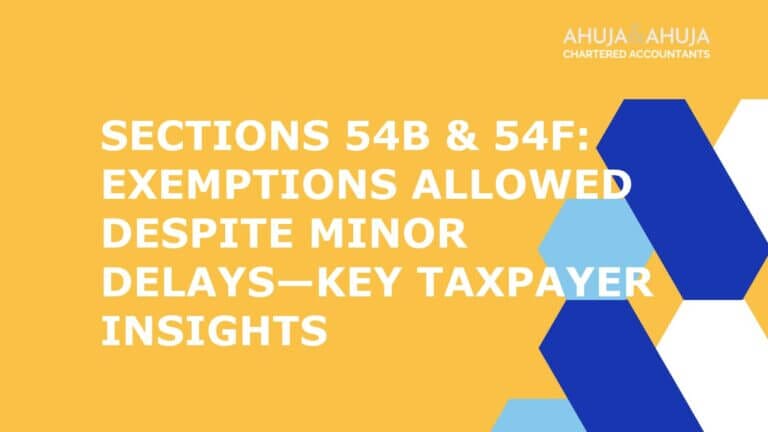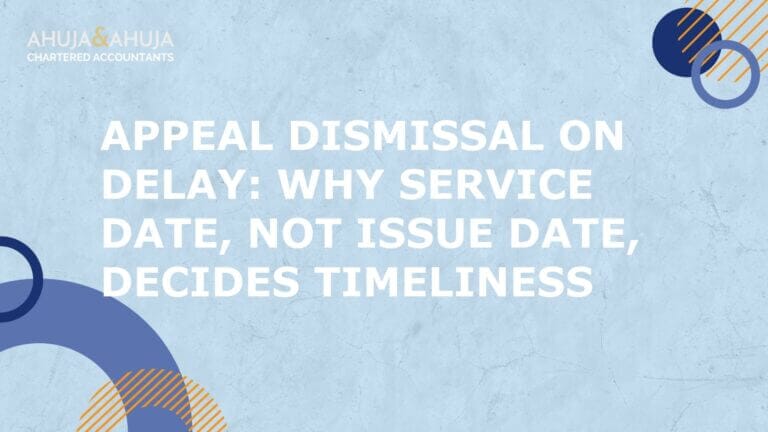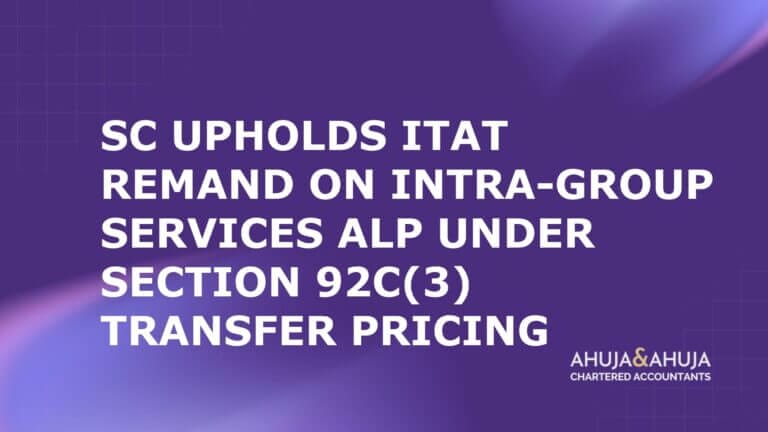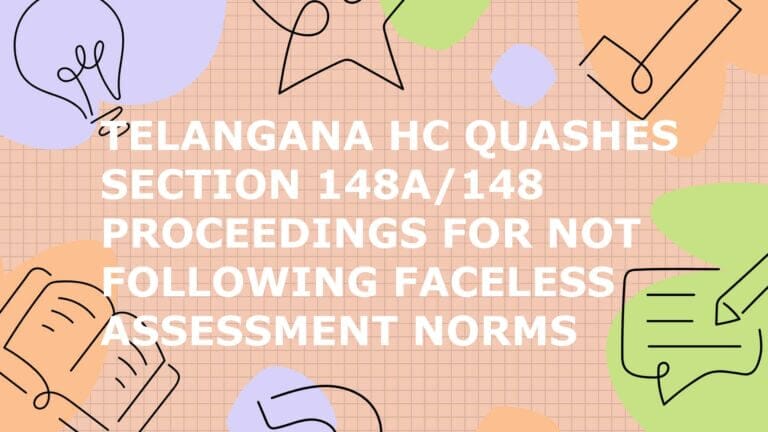Section 54F Deduction: Extended Timeline Allowed per CBDT Circular 1/2023, Rules ITAT Delhi
Section 54F and the Changing Landscape of Capital Gains Exemption
Section 54F of the Income Tax Act has long served as a vital relief for taxpayers looking to reinvest capital gains from the sale of long-term assets into residential property. The rationale is straightforward: to encourage channeling of capital into housing, while providing a legitimate tax shield for genuine reinvestment. However, the law’s benefits hinge on strict adherence to prescribed timelines—both for making the investment and for parking unutilized gains in a designated Capital Gains Account Scheme (CGAS).
Over the years, these timelines have become a source of anxiety and litigation. Delays—whether due to procedural bottlenecks, market realities, or extraordinary events like the COVID-19 pandemic—have led to denial of exemptions, even in bona fide cases. The result: taxpayers and professionals have been left grappling with uncertainty, and the original intent of the law has sometimes been lost in technicalities.
The recent intervention by the Central Board of Direct Taxes (CBDT) through Circular 1/2023, and its subsequent judicial endorsement by the Delhi ITAT in Rikant Pittie vs ACIT, marks a significant shift. This article unpacks the legal interpretation, practical impact, and compliance strategies arising from this development, equipping both taxpayers and professionals to navigate the new regime with confidence.
Section 54F: Statutory Framework and Timelines
At its core, Section 54F offers exemption from long-term capital gains tax when the net consideration from the sale of any long-term capital asset (other than a residential house) is invested in purchasing or constructing a new residential house within a specified period:
- Purchase of new house: Within 1 year before or 2 years after the date of transfer.
- Construction of new house: Within 3 years after the date of transfer.
If the gains are not immediately invested, the law requires the unutilized amount to be deposited in a CGAS account before the due date for filing the return under Section 139(1), which is covered under Income Tax Return Filing.
Traditional Compliance Challenges
In practice, aligning real estate transactions with these timelines is easier said than done. Delays in property identification, regulatory approvals, or even force majeure events can disrupt plans. Many taxpayers have found themselves partially investing before the deadline, with the balance stuck in limbo—leading to disputes with the Assessing Officer (AO) and, often, denial of the exemption.
If you are looking for localized professional support during these procedures, firms like Chartered Accountants Delhi offer expert guidance for taxpayers in India, including compliance and documentation assistance.
CBDT Circular 1/2023: Extending a Lifeline
Recognizing the genuine hardships faced by taxpayers, especially during the pandemic, the CBDT issued Circular 1/2023 on 6th January 2023. The circular provides a much-needed extension for the statutory timelines under various capital gains exemption provisions, including Section 54F.
Key Features of the Circular:
- Scope: Applies to cases where the last date for investment or deposit under Section 54F (and similar sections) fell between 1st April 2021 and 28th February 2022.
- Extension: The deadline for making the investment or deposit is extended to 31st March 2022.
- Conditions: The extension is not automatic for all cases; it is specifically tied to the period impacted by COVID-19 disruptions.
- Policy Intent: The circular aims to ensure that genuine taxpayers are not penalized for delays beyond their control, preserving the spirit of the exemption provisions.
This move was widely welcomed, but questions remained about its practical application—especially in cases where only part of the capital gains had been utilized before the original deadline, with the balance invested during the extended period.
Case Spotlight: Rikant Pittie vs ACIT (ITAT Delhi)
The ITAT Delhi’s decision in Rikant Pittie vs ACIT provides much-needed judicial clarity. Here’s what happened:
- Facts: The taxpayer sold a long-term asset, generating capital gains of over ?42 crore. A substantial portion was invested in a new property, but ?17.54 crore remained unutilized before the original deadline. The AO denied exemption for the unutilized portion, citing missed timelines.
- Assessee’s Stand: The taxpayer argued that the investment was completed within the extended period allowed by CBDT Circular 1/2023, and thus, the exemption should be available.
- Tribunal’s Reasoning: The ITAT examined the interplay between the statutory timelines and the CBDT’s extension. It held that the circular’s intent was to provide relief for genuine delays, and that utilization of funds within the extended period satisfies the requirements of Section 54F.
- Outcome: The tribunal allowed the exemption, dismissing the revenue’s appeal and setting a persuasive precedent for similar cases.
For further insights on judicial decisions related to assessment orders, you may explore the blog Importance of Application of Mind when approving assessment orders.
Key Takeaways So Far
- The CBDT’s extension is a pragmatic response to real-world challenges, not a mere technicality.
- Judicial endorsement by the ITAT Delhi gives the circular real teeth, especially for cases involving partial or delayed investments.
- Taxpayers and professionals must understand both the scope and the limitations of the relief, and ensure robust documentation to defend their claims.
Practical Implications: Documentation and Evidence
For taxpayers seeking to claim Section 54F exemption under the extended timeline, documentation is the first line of defence. The following records are essential:
- Proof of Investment/Deposit: Maintain bank statements, property purchase agreements, builder receipts, and CGAS deposit slips clearly showing the date and amount of each transaction. (See also Payment to builder for under construction property covered for exemption u/s 54 for builder-related documentation.)
- Chronology of Events: Prepare a timeline mapping the sale, original deadline, extended deadline, and actual investment dates.
- CBDT Circular Reference: Keep a copy of Circular 1/2023 and any correspondence with the bank or authorities referencing the extension.
- Calculation Sheets: Document how the capital gains were apportioned and utilized, especially if investments were staggered.
During assessment or scrutiny, these records help establish bona fide intent and compliance with the extended period. Aligning your paperwork with the new deadlines is crucial—any ambiguity can invite queries or denial.
Compliance Strategy Shift: Navigating the Extended Timelines
The ITAT Delhi ruling and CBDT’s circular have changed the compliance playbook for capital gains exemption:
- Adaptive Planning: Taxpayers who miss the original Section 54F deadline now have a legitimate window to complete investments, provided they fall within the specified COVID-affected period.
- Risk Assessment: While the extension offers relief, it is not a blanket amnesty. Each case must be evaluated for eligibility—especially regarding the relevant dates and the nature of delay.
- Best Practices:
- Plan for staggered investments, but ensure all transactions are completed within the extended window.
- Maintain a clear audit trail for each tranche of investment.
- Communicate proactively with your CA or tax advisor to avoid last-minute surprises.
Illustrative Scenario
Suppose a taxpayer sold a plot in May 2021, with the original investment deadline falling in January 2022. Due to pandemic-related delays, the new property was purchased in March 2022. Under the circular, this investment qualifies for exemption—provided all other conditions are met and documentation is robust.
Local taxpayers in the north of India can approach for Chartered Accountants Chandigarh for expert hands-on assistance with such filings and advisory.
Exceptions, Limitations, and Advisory Considerations
While the CBDT Circular 1/2023 is a boon, it comes with caveats:
- Applicability Window: The extension only covers deadlines between 1st April 2021 and 28th February 2022. Investments outside this window do not qualify.
- No Blanket Relief: The circular does not override other conditions of Section 54F—such as the requirement to invest in a single residential house or the prohibition on owning more than one house (other than the new one).
- Interpretative Ambiguities: Some gray areas remain, such as treatment of partial investments or cases where procedural lapses (like late CGAS deposit) occur.
Professional Advisory
CAs and consultants must carefully assess each client’s facts, avoid over-reliance on the circular, and document eligibility thoroughly. When in doubt, a conservative approach is safer.
Risks, Pitfalls & Procedural Traps
Even with the extension, procedural missteps can prove costly:
- Common Errors:
- Missing the extended deadline due to miscalculation.
- Incomplete documentation of investment or deposit.
- Failing to report the exemption claim properly in the ITR.
- Consequences:
- Denial of exemption.
- Interest and penalty for under-reporting.
- Prolonged litigation if the claim is challenged.
Tip: Always cross-check timelines, keep all supporting documents, and ensure the exemption is clearly disclosed in the return. For more on filing deadlines, refer to ITR Filing Last (Due) Date Fy 2022-23 (Ay 2023-24).
Advisory for Professionals: Reporting, Planning & Disclosure
Tax professionals should:
- Guide Clients: Clearly communicate the new deadlines and documentation requirements.
- Synchronize Actions: Ensure investments and reporting align with the relevant assessment year and the extended period.
- Audit Trail: Maintain a comprehensive file for each exemption claim, including all correspondence, calculations, and legal references.
- Disclosure: Accurately reflect the exemption in the ITR, with supporting notes if necessary.
Professionals based in regions such as Ghaziabad are often uniquely positioned to provide such integrated planning and support.
Legal Precedent and its Authority: Beyond Delhi ITAT
The ITAT Delhi decision is persuasive but not binding on other benches or jurisdictions. Other tribunals may interpret the circular differently, especially if facts vary. Uniformity may only emerge if the matter reaches the High Court or Supreme Court. Until then, professionals should monitor developments and advise clients accordingly.
For further reading on judicial interpretations, you may refer to the blog on Supreme Court on Section 263: Remand to AO Only in Case of Failure to Investigate.
Rectifications & Retrospective Relief: Past/Ongoing Assessments
Taxpayers whose Section 54F claims were denied solely due to delayed investment (within the now-extended period) may consider:
- Rectification Applications: Filing under Section 154 for clear mistakes apparent from record.
- Appeals: If the assessment is recent, appeal to the CIT(A) or ITAT, citing the CBDT circular and ITAT Delhi precedent.
- Reopening: In rare cases, seek reopening if substantial relief is possible and the law permits.
Each case requires a tailored approach, balancing the cost, benefit, and procedural feasibility. Professional support and outsourcing can expedite such filing processes—consider outsourcing services for this purpose.
Broader Impact on HNIs & Real Estate Investors
For HNIs and real estate players, the clarification is a game-changer:
- Large-Value Deals: Multi-crore transactions often involve phased payments and delayed registrations. The extension provides breathing room for compliance.
- Staggered Investments: Investors can structure deals more flexibly, provided they stay within the extended window.
- Custom Advisory: Professionals should design bespoke strategies, factoring in the client’s portfolio, transaction timelines, and risk appetite.
Example
An HNI sells commercial land in mid-2021, with staggered investments in two residential flats completed by March 2022. With proper documentation, both investments can qualify for exemption under the circular.
For more tailored financial services, including project finance and CMA report preparation, see finance services.
Key Takeaways and The Road Ahead
- The synergy between CBDT Circular 1/2023 and the ITAT Delhi ruling offers genuine relief for taxpayers facing unavoidable delays.
- Compliance is not just about meeting deadlines, but about maintaining a clear, defensible audit trail.
- Professionals must stay alert to evolving interpretations and advise clients with both caution and creativity.
- As more cases reach higher forums, further clarity and uniformity are expected.
Bottom line: The law is moving towards a more pragmatic, taxpayer-friendly approach—provided you play by the (new) rules.
Disclaimer
The materials provided herein are solely for educational and informational purposes. No attorney/professional-client relationship is created when you access or use the site or the materials. The information presented on this site does not constitute legal or professional advice and should not be relied upon for such purposes or used as a substitute for professional or legal advice.







